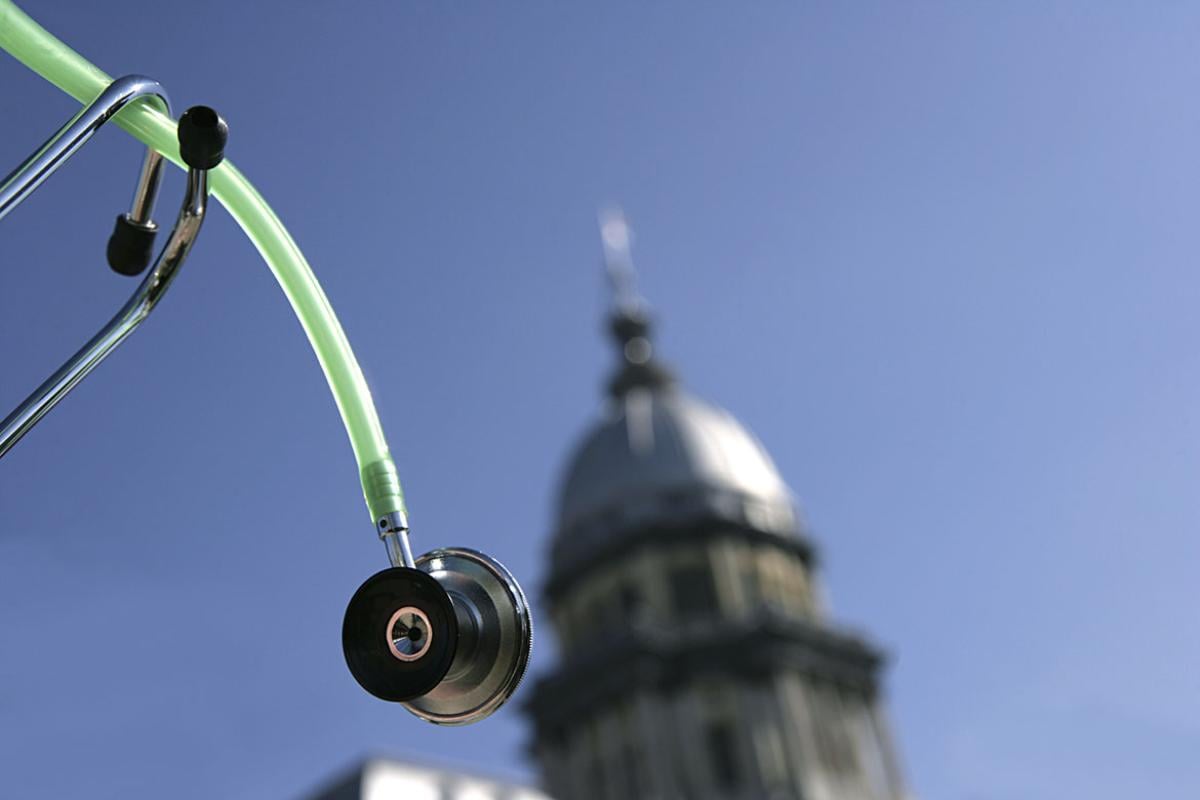A career working with a federal health agency can offer varied experiences and a chance to make a widespread impact on national and global health.
Leading physicians in federal organizations such as the Indian Health Service (IHS), Centers for Disease Control and Prevention (CDC), and the Food and Drug Administration (FDA) offered their firsthand insights on federal health agency careers during a recent panel discussion. Here are some key takeaways.
The perspectives shared by the panelists represent their personal views and do not necessarily represent the position of any federal agency.
Daily variety
Any physician can speak to the unpredictable and unique nature of a career in medicine. That may be even truer for a career working with a federal agency.
An AMA member, Andrew Karasick, MD, is a medical officer at the FDA who works in the agency’s Center for Food Safety and Applied Nutrition.
“No day is really the same,” Dr. Karasick said at the 2023 AMA Annual Meeting panel discussion. “One day you are working on a recall. The next day you are working on a public service announcement. It’s a variety of job duties and tasks and it really makes working at the FDA quite interesting.”
Panelist Jane Baumblatt, MD, echoed those sentiments. Dr. Baumblatt, a Captain in the U.S. Public Health Service (PHS) Commissioned Corps and practicing internist.
“Our days are different,” said Capt. Baumblatt, whose background includes stints with the FDA, NIH, and Tennessee State Department of Health. “There’s a lot of different hats that you wear. That’s what makes it exciting. In patient care, the variety comes from the types of patients that you see and that’s a source of excitement. For us, it comes from whether you are in a meeting talking to high-level officials about things that should be changed or you are going downstream and the educating the public on the safety of COVID vaccines; you have to be able to switch hats across a variety of subject matter.”
Options to match one’s lifestyle
In terms of both how he practices and the type of life he aims to lead, AMA member Jay Kennard, MD, has found his career working as a Captain in the PHS and leader in the Indian Health Service to be rewarding.
A family physician and medical director working with the Oneida Nation in Wisconsin, Capt. Kennard’s first exposure to the organization was during a medical school rotation that took him to Alaska at an IHS hospital.
“One of the things that shaped me was being there and being the first one in the ER when something happens,” he said. “It was an exciting opportunity.”
Patient continuity
Federal health agency careers don’t only focus on oversight and policy. There is ample opportunity for patient care as well, Dr. Kennard said.
“I have patients now that I have taken care of for 15-plus years,” he said. Someone asked me what I like about what I do. For a short time, I took care of five generations in one family. I had a 95-year-old matriarch and a 70-year-old daughter down through a newborn,” he said. “To me, that’s what a family doc should do.”
Career flexibility
As a federal employee, the chances to move to different locations and explore different projects are numerous.
“You have ample opportunity to do details at different locations,” Dr. Karasick said. “For example, I had colleagues who volunteered to help with the unaccompanied minors at the border last year. I had colleagues who volunteered to help with the Afghan parolees who had come in from overseas. Those opportunities were not just available, they were encouraged. You can do these things that are meaningful and also enriching to your professional career as well.”
Comprehensive benefits
Physicians in federal service, including those serving in the PHS, earn retirement benefits with a variety of options, such as pensions for medical officers serving at least 20 years in the uniformed services or a combination offering 401k-style retirement benefits. This provides physicians with stability and the option to change gears while ensuring they have a steady income.
AMA member Kristie Clarke, MD, is a medical epidemiologist focusing on health equity for CDC. Dr. Clarke is 12 years into her career working with CDC and a Commander in the PHS.
“I’ll be eligible for a retirement with pension in eight years,” she said. “I’ll obviously keep working but having that flexibility and that option is valuable. I can also pass along my four years of post-secondary education benefits to my daughter. She is only five years old now; in 13 years who knows how much college is going to cost? That takes off a lot of stress.”
While each officer in the Public Health Service Corps is entitled to accrues 30 days of leave, per year, Cmdr. Clarke remarked that things can sometimes take on an exciting pace, albeit exhausting pace. During a recent month-long assignment in Equatorial Guinea—when she was working to with the Ministry of Health and global partners to combat a Marburg virus outbreak—Dr. Clarke worked seven-day weeks for close to a month.
“That type of workload is what’s expected, and fulfilling the mission is very important to all of us,” she said. “It’s what you sign up to do,” she said. “There will be weekends when I get back and federal holidays.
“In peace times, when. When I’m not deployed and working from my office our days can be very , the schedule is more manageable and flexible.”




